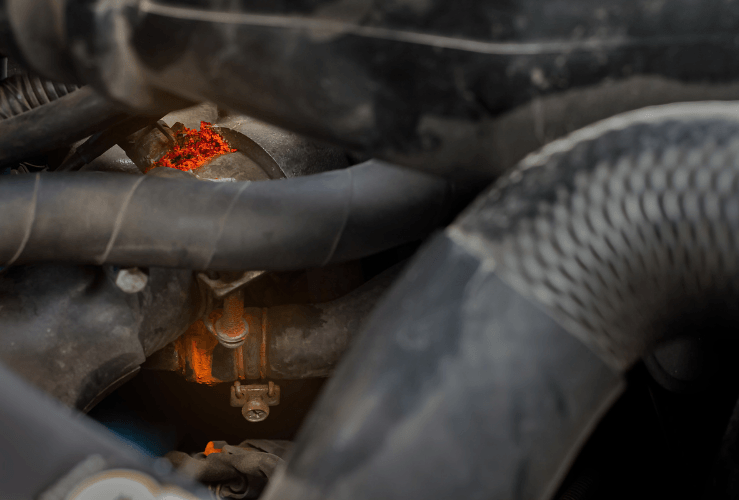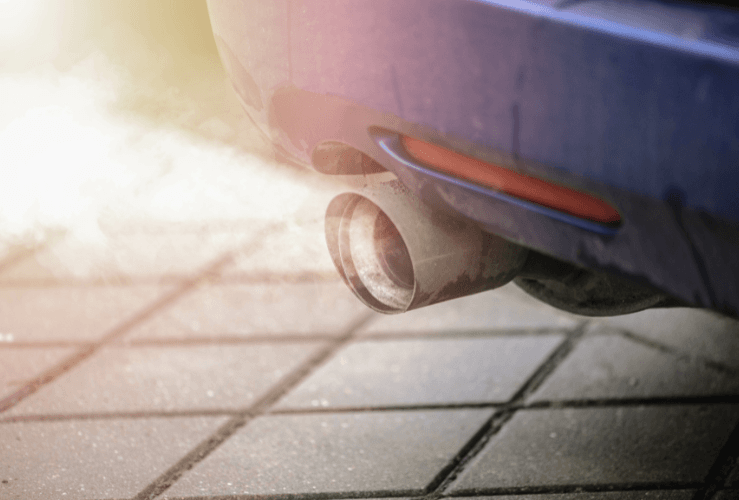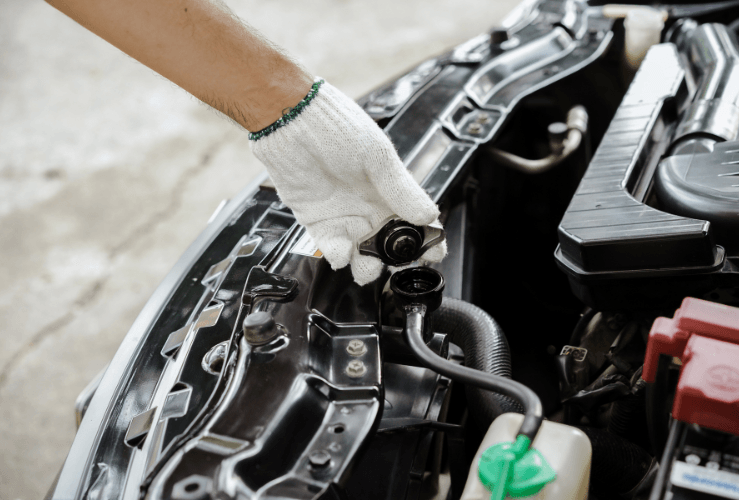Find out how to spot a coolant leak - and what you should do to fix it.
Your car's engine is kept within its operational temperature range with coolant. In winter, your radiator’s coolant stops the engine freezing up, and in warmer seasons, it prevents it from overheating.
But what causes coolant to leak? How to stop a radiator leak? Can I fix a coolant leak without taking my car to the garage?...
Here, we’ll answer these and other common coolant leak questions.
The sweet smell of engine failure
If you notice a sweet smell coming from your vehicle, it's a telltale sign you have a coolant leak - which could lead to engine failure if left unchecked.
But there are other signs to look out for.
What is engine coolant?
Engine coolant is often also termed 'antifreeze'. This is because it's a 50-50 mix of antifreeze and water.
Water by itself is not sufficient to keep an engine within its correct temperature range.
Without an antifreeze additive, it would suffer a catastrophic failure - either from overheating or freezing up.

Why is my car leaking coolant?
Here are the most common signs you have an engine coolant leak.
Overheated engine
If your engine overheats, you'll notice the dashboard temperature gauge rise.
You may also experience reduced engine power, a ticking noise or thumping from the engine, steam coming from the bonnet, and a 'hot' smell.
Bubbling radiator
Bubbles in your car's cooling system, often accompanied by a gurgling sound, are another sign you may have a coolant leak. However, bubbling can also occur with a head gasket problem.
Either way, it's best to get your car checked out by a professional.
Coolant leaking from bottom of car
Another obvious sign of a coolant leak is the appearance of puddles under your radiator. If you notice any puddles, check under the bonnet and look for leaking fluid.
With the engine still running, aim to trace the source of the leak. The antifreeze component of coolant may be coloured green, red, blue, yellow, violet or orange.
If the coolant hasn't been replaced in a while, it may take on a dark brown look since it contains more debris. Oil, on the other hand, is always brown or black in appearance.
In some cases, the puddle may have dried, making it difficult to work out if it's oil or coolant. However, with an ongoing coolant leak, it will still be wet.
Reduced fuel economy
Without sufficient coolant, your car will burn more fuel. So if you notice you need to fill up more regularly, this could be a sign your coolant is leaking.
Loss of acceleration
Without enough coolant, your engine will struggle to maintain power, leading to reduced acceleration. This is due to less efficient combustion processes, which can also cause your engine to idle 'roughly'.
A stained or discoloured radiator
Stains or discolouration on or around your radiator are another sign that coolant has been escaping and is corroding the radiator metal.
Low coolant warning sign
Low coolant may also cause a 'low coolant' sign to glow up on your dashboard.
Some car dashboards may also display a text warning like 'COOLANT LEVEL LOW ADD COOLANT'.

White smoke from exhaust
If you notice white smoke coming from your exhaust, there's probably an issue with your cooling system. White smoke is created when engine oil and coolant mix together.
This may also be a sign of a head gasket leak.
Why does antifreeze leak?
- Blown radiator hose
- Damaged/worn hose clamp
- Warped head gasket
- Damage to the radiator itself
- Too little (or no) antifreeze in the coolant
- Leaky aft cooler
- Cracked coolant expansion tank
- Water pump failure
- Heater core (which what the cabin) is faulty/damaged
How to find the source of the coolant leak
The easiest way to locate the source of a coolant leak is to open your bonnet and wash the radiator and radiator hoses with water, then look for signs of escaping coolant.
How to fix a leaking radiator/coolant leak
Since a coolant leak can lead to serious - and expensive-to-repair - damage to your engine, it should be tackled as soon as possible.
It's best not to drive with a coolant leak, as this could overheat the engine. In some cases, the damage may be so extensive that the car is a write-off (i.e. it would cost more to fix than the value of the vehicle).
In most cases the issue relates to the radiator, but could have other causes (see list above)
The best course of action is to take your car to a garage for a check.
They may add radiator sealant to the engine to seal over any small cracks. If this does not remedy the problem, the radiator may need to be removed for a more extensive repair.
A cracked radiator hose may also be causing the leak; your mechanic can identify this problem and replace the component.
Leaking radiator hoses may also be the source of the leak.
A leaky water pump or faulty thermostat may also be the culprit.

Can I repair a coolant leak by myself?
If you have some mechanical knowledge, you may try to fix the coolant leak yourself. Read your manual or refer to online resources. Fixing the issue yourself could save you a significant sum.
However, for most drivers, the easiest and quickest option is to take your car to a garage for a check.
How much does it cost to repair a coolant leak?
Coolant leaks can cost anywhere between £100 and £500 to fix.
In most cases, the earlier you catch the issue, the less the damage and the lower the repair bill.
In conclusion
If you suspect you have a coolant leak, you should avoid driving and get the problem fixed as soon as possible.




